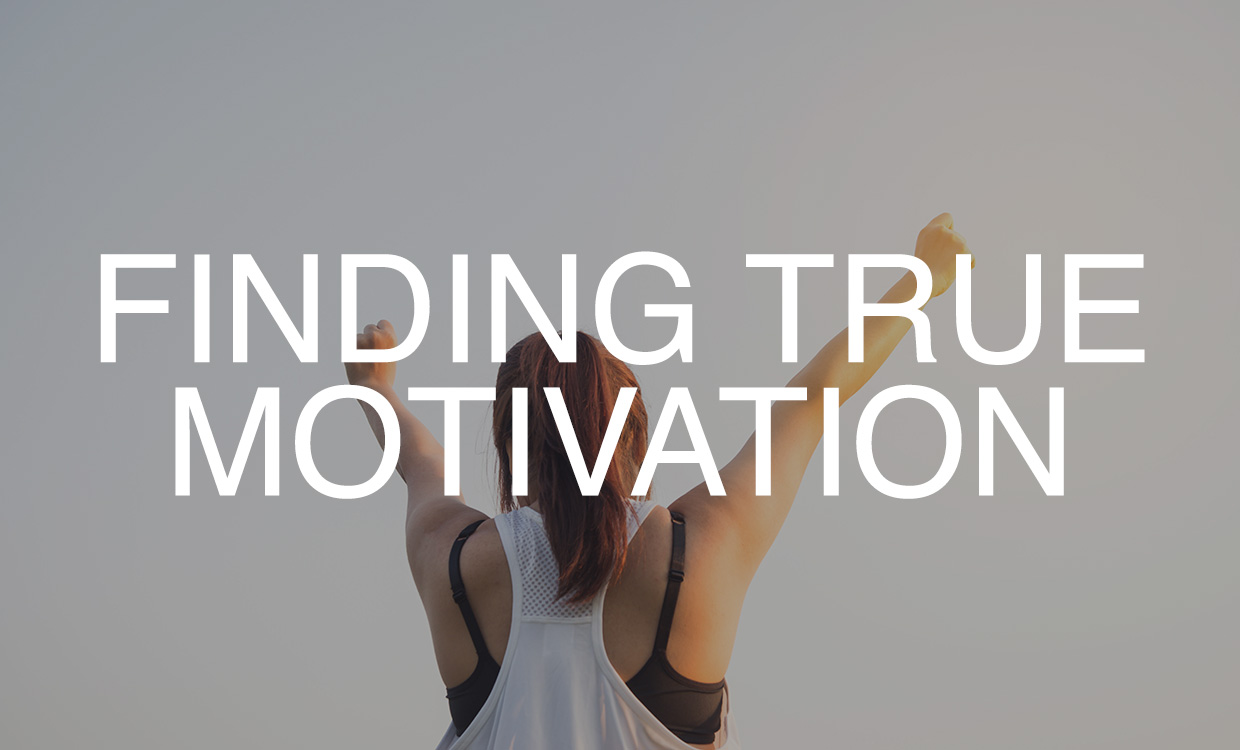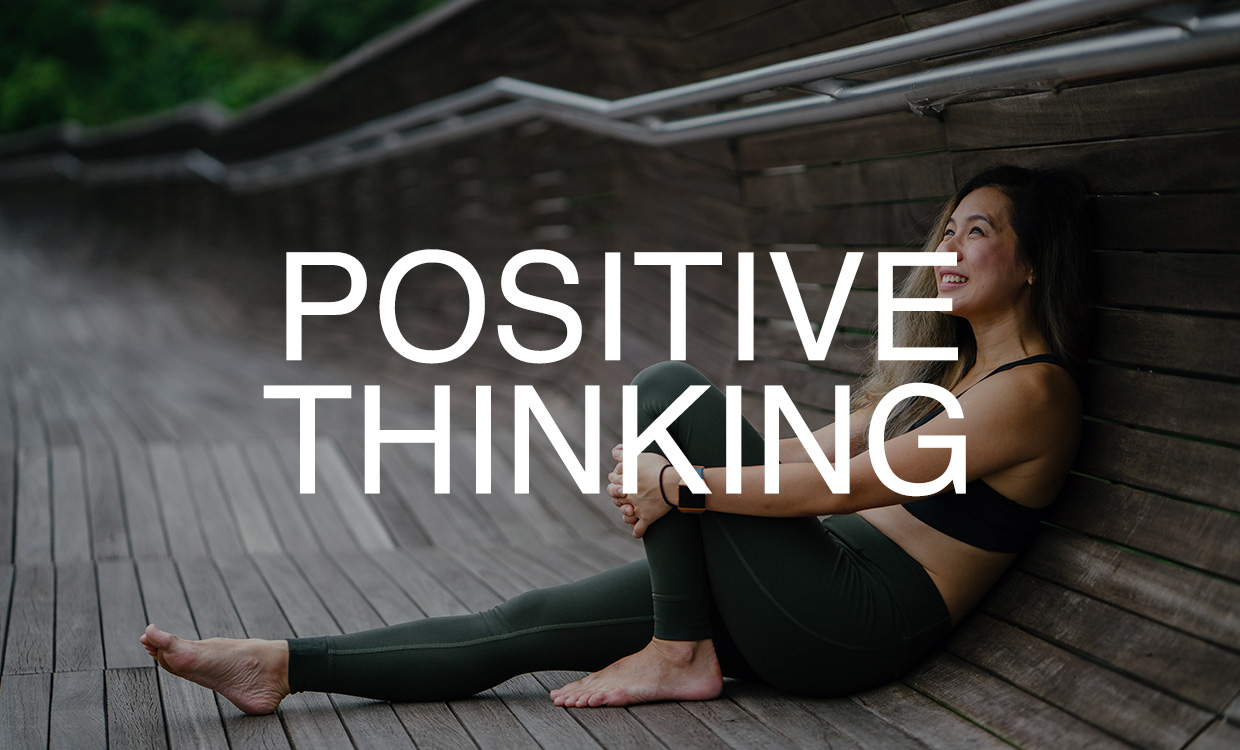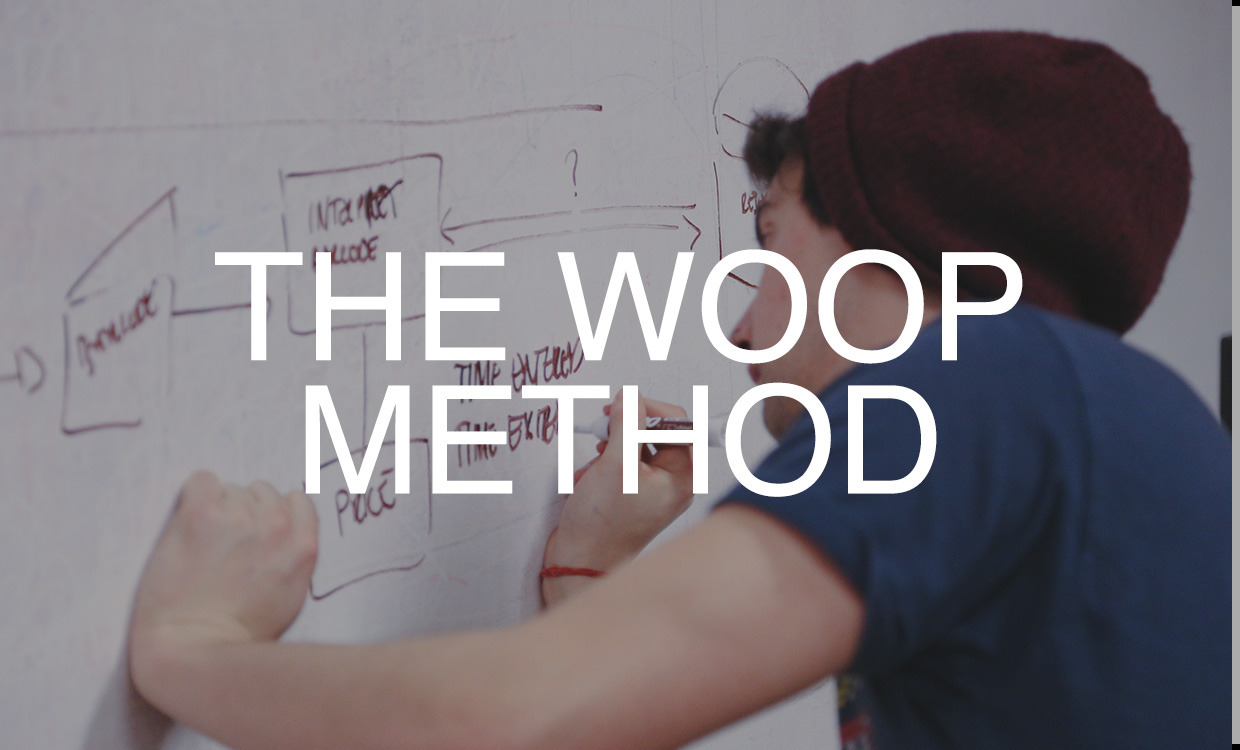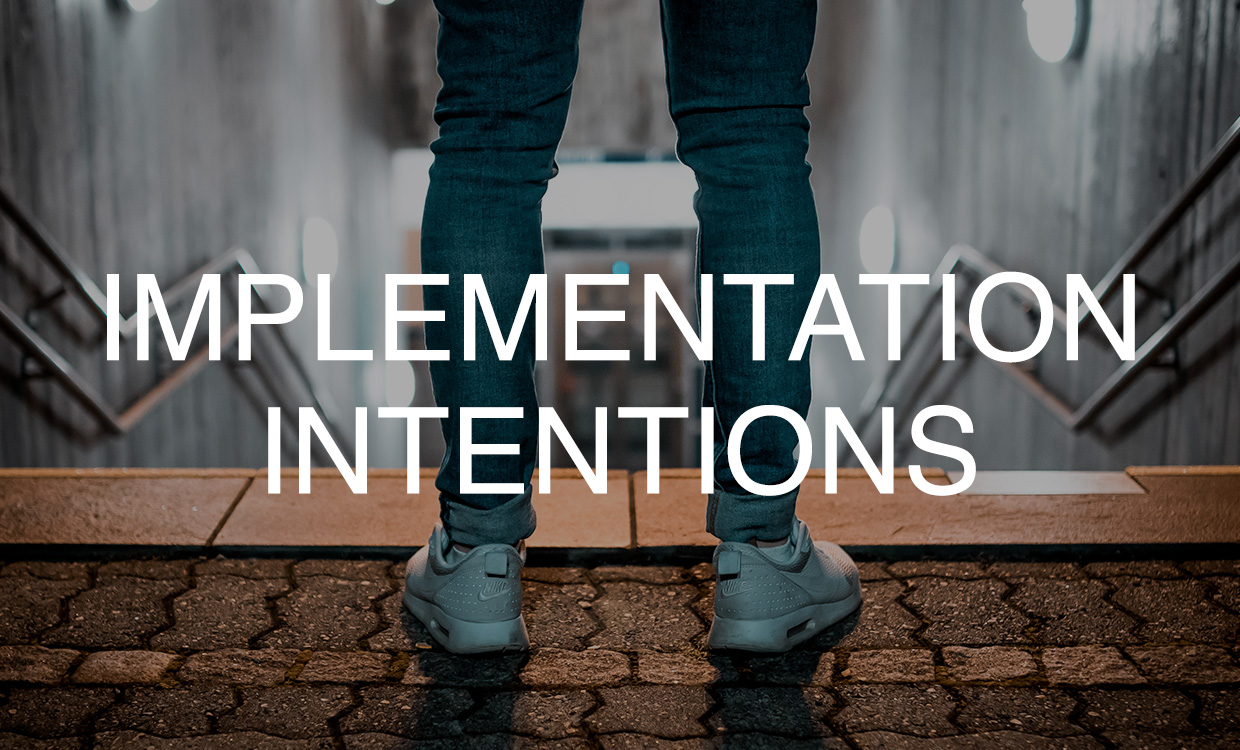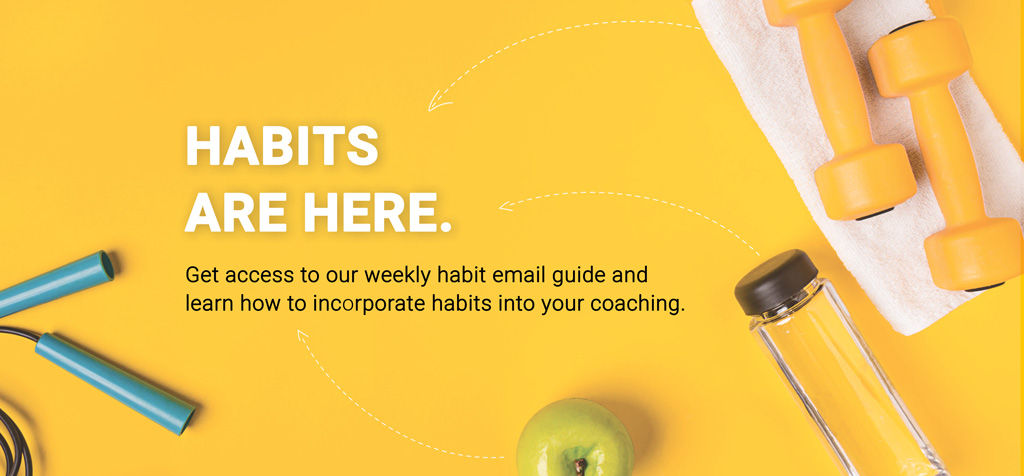Now that we know what makes a habit a habit, and have discovered how our brains can make it difficult to stick to our intentions and escape those tried and tested patterns of behavior, it’s time to look at if and how we can overcome our ingrained tendencies.
Is it possible to break old habits and make new and (hopefully) better ones? Yes! It absolutely is, and there are lots of different ways to do it.
Finding True Motivation
As a fitness professional, you’re definitely already familiar with the concept of motivation and the important role it plays in a client’s fitness journey. You’ve probably helped many clients figure out why they both should invest in their fitness and why they’d want to. But when it comes to habits, the importance of motivation is magnified. Big time.
Why? Because we aren’t just talking about a “why” that will get someone through a few workouts or a crash course in fitness. We’re talking about a “why” that can sustain major changes in the long term; a “why” that can power someone for a lifetime, even!
According to author and psychologist, Michelle Segar, finding this kind of true motivation can be a challenge for many because we have a tendency to look to things in the future for inspiration.
Personal training or nutrition coaching clients might embark on their road to health and wellness with their eyes on a target of losing x number of pounds by a specific date; avoiding health issues like diabetes, cancer or heart disease later in life, or extending their overall longevity and health. And it’s no wonder this happens, what with research studies and medical practitioners reminding us almost daily that what we do today has an impact on our health and wellness years from now.
But all of these “motivators” are somewhat abstract and live in a time far away from the here and now. And according to Michelle Segar, those motivators are lacking a key ingredient: immediate gratification.
Other psychologists agree, proposing that in order to create a new habit, the behavior needs to generate satisfaction.
Consider an individual whose doctor tells them they need to shed 15 lbs so they can lower their risk of type 2 diabetes. Despite not being a regular exerciser, they make the obvious and immediate decision to sign up for a gym membership. They drag themselves to the club every day after work and grumble through a half-hour jog on the treadmill.
Does this sound like the start of a good, life-long habit? Probably not. If you were the betting kind, you might even wager that this well-intentioned individual might not make it more than a week.
After all, trying to force yourself to do something you’re dissatisfied with no matter how good for you it is can just feel like you’re banging your head against a wall, and even the most stubborn among us can only do that for so long.
Instead of subjecting ourselves to dissatisfying workouts, Segar and her fellow community of psychologists recommend finding activities that meet the criteria of “healthy” or “good for you” while also making you happy. Then, your motivation for the activity isn’t just based in some far-off goal, it’s rooted in the activity itself and the satisfaction it gives you.
Doing this is not only more likely to lead to longer-lasting habits, but it also solves the second mistake Segal says we often make when finding motivation for our fitness journeys: choosing things that are not connected to us personally or that don’t truly come from our “self”.
Think of those personal training clients who say, “I want to lose 20lbs because I’m getting married and have to look good”, or “I need to bulk up and put on some muscle, I want to look like the kind of guy girls go for”. According to Segal, these are the motivations we find ourselves turning to because they’ve been hand-fed to us by society; the fitness, wellness, and diet industry, or even our friends and family. They’re not rooted in you or your personal and immediate gratification.
Instead, clients should try something like, “I’m going to take a dance class because it’s fun and makes me feel confident in my body” or “I’m going to go for a run every day because it helps me clear my head and de-stress.”
Find what satisfies on a deep and personal level and you’ll find true motivation.
Positive Thinking and Mental Contrasting
Remember when we talked about self-fulfilling prophecies and how you could essentially poison your chances of success by believing you’d fail at a task or behavior change? Well, good news! The antidote to not only free but (once you’ve found your true motivation) it’s available in ample supply: positive thinking!
You’re probably not surprised to hear that positive thinking is a recommended tactic for forming good habits, but what you might not know is that not all positive thinking can be helpful. In fact, researchers have found that depending on how it’s done, it might cause more harm than we’d like.
According to a study by researchers Gabriele Oettingen and Thomas A. Wadden, the problem with positive thinking is when it extends beyond an expectation of success to include full-blown fantasies of success.
The duo came to this discovery by asking a group of women enrolled in a weight-loss program to imagine how they would do in a selection of “open-ended scenarios about future events”. Among the scenarios were those that asked the participants to imagine they had successfully completed their weight-loss program and some that asked them to imagine situations where they were tempted to cheat on their diets. The women were then asked to provide a rating for how positive or negative their resulting thoughts were.
A year later, Oettingen and Wadden followed up with the women and discovered that the women who had imagined themselves more positively in those scenarios had actually had lower success losing weight. They had lost fewer pounds than their peers who had imagined themselves more negatively.
After numerous follow-up studies, the researchers believe this inverse relationship between success and super positive thoughts is because positive thinking (especially when it involves visualizing or fantasizing about success) can actually trick our minds into thinking we’ve already achieved our goal, and that can make you less intent on pursuing it in real life.
They also hypothesize that this kind of positive thinking can drain you of the energy you need to take action and do what it takes to turn the fantasy into reality.
So should we all plunge ourselves into a pit of pessimism and gloom? Now, now, let’s not be hasty.
Positive thinking has lots of benefits, like lowering anxiety about the future and reducing blood pressure—it just needs to be paired with more grounded (read: pragmatic not pessimistic) thoughts.
This more balanced, hybrid approach to positive thinking is what psychologists have coined “mental contrasting” because you approach the task or goal with optimism and confidence, but you also identify the main challenges you will face as you try to achieve it.
Research shows that this method can help individuals succeed at higher rates, including studies that showed individuals who participated in mental contrasting before embarking on a fitness and nutrition program exercised for longer and ate more vegetables than those who did not—even four months after completing the mental exercise.
In fact, psychologists findings on the benefits of mental contrasting have been so overwhelming that is has become a key element in a larger process for taking on new goals: the WOOP Method.
The WOOP Method
The WOOP Method, whose funny sound name stands for:
Wish
Outcome
Obstacle
Plan
is a process that has been quickly sweeping the industry as a major life hack, sometimes even touted as “science’s number one tool for habit change and goal achievement”. Developed by Gabriele Oettingen (who we met earlier) and more formally referred to as MCII (Mental Contrasting with Implementation Intentions), it combines the latest in psychology and motivation theory research to create 4, easy-to-follow steps that should (if properly applied) lead to increased rates of success.
The method goes something like this:
Step 1: Wish
To start, you identify a wish that’s very deeply and personally important to you. It doesn’t particularly matter what the timeline is for that wish. It could be something in the next 4 weeks, something in the next 6 months, or something with no deadline at all.
The wish should be something that is somewhat challenging, but that you can actually reasonably fulfill yourself. The idea isn’t to shoot for the moon, but to look for a manageable goal to work toward.
Someone starting on their health and fitness journey, for example, might make a wish like “I want to exercise more often” or “I want to eat more balanced and nutritious meals.”
If you end up choosing a goal that’s too difficult or too large, by following the WOOP method, you’ll quickly realize it and will be able to come back to step 1 and set a new and more achievable goal.
Step 2: Outcome
Once you’ve made your wish, you ask yourself, “what is the best possible outcome of fulfilling that wish?” and you imagine that ideal outcome. It should be meaningful and important.
In the case of the individual who wanted to work out more often or eat better, this might be something like, “I’ll have more energy and confidence” or “I’ll reduce my risk of heart disease and diabetes.”
This is the part where really focus on the positive, visualizing the ideal and fantasizing about how you’d feel if your wish came true.
Step 3: Obstacles
As we already know from Oettingen’s research though, those positive fantasies can’t go unchecked, so in the third step, it’s time to switch gears and identify the key challenges you will face while trying to fulfill your wish. Doing this right after thinking about the positive side of things is what makes up the “mental contrasting” part of this method.
While it’s easy to think of obstacles that are external to ourselves (like, “the gym is too far from my house” or “the grocery store is always out of the ingredients I need”), it’s important to dig deep and look for more personal obstacles like, “I’m tired after a day at work and don’t feel like working out”, or “I’m not excited to go to the gym”, or “I leave my meal planning and cooking to the last minute.”
Step 4: Plan
The final step in the WOOP method is to put a plan in place for how you are going to overcome the obstacles you outlined in step 3 and fulfill the wish you made in step 1.
To do this effectively, you need to create what are known as implementation intentions. (Remember when we talked about intentions and how they often give way to old habits? Well, these are like intentions on steroids, and they’ve got the stopping power to help you make real change.)
Implementation intentions follow a very simple formula:
If or when situation X (obstacle) arises, I will perform response Y (action to overcome that obstacle).
The general concept is that you look at the challenges or obstacles you identified in step 3, and create specific plans for how you will respond to them whenever they come up. For example:
Whenever I have the munchies late at night, I will get myself a big glass of water to drink instead of finding a snack.
They can also take the form of if statements:
If it is my goal to go to the gym tomorrow, I will pack my bag the night before.
By building these life choice equations, if you will, you acknowledge the obstacle, so your intention is rooted in reality, but then you come up with a way to overcome it. It’s a perfectly balanced approach to positive thinking that, as most researchers agree, can have a real impact on our habits.
On Implementation Intentions
Just how effective are implementation intentions?
While it can be hard to pin down an exact measure, most researchers seem to agree that implementation intentions can have a significant positive impact on goal attainment because, at the very least, it gives individuals a plan. Studies have shown that making plans to do something in the form of implementation intentions versus just learning information about why you should do something result in higher level of goal attainment.
Oettingen and her colleagues at NYU tested this by looking at a group of women with the shared goal of increasing their activity levels. Half of the women received what’s known as an “information-only intervention” where they were merely provided with relevant information to help them achieve their goals, while the other half received the information and were also asked to create implementation intentions. Four months later, the women who created implementation intentions were exercising more than their peers from the information-only group (though their baseline did increase slightly), and the data showed this increase taking hold as early as 1 week after the intentions were made.
Another study looking at fruit and vegetable intake among adolescents found similar results when they compared the effect of making broad of “global plans” with making an implementation intention. The adolescent participants who made the intentions increased their fruit and vegetable intake more over the course of a month than their peers.
Yet another study found that having teenage women set implementation intentions reduced the number of consultations for emergency contraception.
Of course, those studies looked at implementation intentions alone, created without any other planning frameworks. There are plenty more that have looked at implementation intentions when used as a component in the WOOP method, with similar, if not stronger, positive outcomes.
So it would seem that implementation intentions, especially when paired with mental contrasting can have real positive impact in helping individuals make all kinds of lifestyle decisions.
And as researchers complete more and more studies using the WOOP method or mental contrasting, they’ve started to learn not only how useful they are, but the best way to create them, too!
While the majority of these obstacle = response statements will take a pretty cut and dry format (whenever x happens, I’ll do Y), researchers have found that it can be a good idea to also include implementation intentions that offer two or more possible responses to an obstacle. This is because life is rarely as black and white as the implementation intentions we’re making.
Consider the implementation intention:
Whenever I get home, I will take the stairs up to my apartment instead of using the elevator.
What happens if you arrive home with many heavy bags of groceries? Or a large parcel? You probably won’t want to take the stairs.
It might seem like an easy solution—just skip the stairs this once and take them again the next time—but the real issue is what happens in your brain when you fail to follow your implementation intention. You can lose momentum, start to make more excuses for why you’re not following it in the future, or become frustrated with the intention altogether and give up on it altogether. Making one “exception” might not seem like a big deal, but as creatures of habit hardwired to take the easy way out whenever we can…it can open the floodgates to more poor life choices or set us back to our old ways.
To avoid these risks, researchers advise that implementation intentions need to be reflective of your life and the way you live it—they should take into account the situations you will find yourself in on a daily basis and be specific but still flexible enough to work with your changing schedule. It might take some trial and error or tweaking to get right, but it’s worth it to keep yourself on track, no matter what life throws your way.
So how would be modify our original implementation intention to make it work? We could try something like:
Whenever I get home, if I am not carrying anything too heavy for me to carry up the 5 flights without risking injury, I will take the stairs up to my apartment instead of using the elevator.
The core intention of taking the stairs is still there, and we’ve made allowances for specific circumstances, but we haven’t made it so vague that you could use a small purse or single grocery bag as an excuse to get out of taking the stairs.
As a final note on implementation intentions, it’s important to remember that there are a lot of factors at play and it takes more than just thoughts to turn a plan into action. While researchers agree on their benefits, they also advise that exactly how effective implementation intentions are will vary from individual to individual.
Things like someone’s feelings of self-efficacy, commitment or conscientiousness, even impulsivity can all impact just how well the strategy can work, so coaches should keep that in mind if they plan to use implementation intentions with their clients.
In the next installment, we’ll continue our investigation into the most popular approaches to making new habits and breaking old ones, exploring new topics like habit replacements loops and how changing your context can help to change your habits.
References
Expectation, fantasy, and weight loss: Is the impact of positive thinking always positive? by Gabriele Oettingen and Thomas A. Wadden
The Problem With Positive Thinking by WOOP, There It Is! 4 Steps To Achieve Your Goals NPR Hidden Brain hosted by Shankar Vedantam feat. Gabriele Oettingen
When planning is not enough: Fighting unhealthy snacking habits by mental contrasting with implementation intentions (MCII) by Marieke A. Adriaanse, Gabriele Oettingen, Peter M. Gollwitzer, Erin P. Hennes, Denise T. D. de Ridder, and John B. F. de Wit
From Fantasy to Action: Mental Contrasting with Implementation Intentions (MCII) Improves Academic Performance in Children by Angela Lee Duckworth, Teri Kirby, Anton Gollwitzer, and Gabriele Oettingen
Implementation Intentions: Strong Effects of Simple Plans by Peter M. Gollwitzer
Physical activity in women: effects of a self-regulation intervention by G. Stadler, G. Oettingen, and PM Gollwitzer
Comparing implementation intention interventions in relation to young adults’ intake of fruit and vegetables by Janine Chapman, Christopher J. Armitage, and Paul Norman
Implementation intention formation reduces consultations for emergency contraception and pregnancy testing among teenage women by Jilly Martin, Paschal Sheeran, Pauline Slade, Alison Wright, and Tracey Dibble
Self-efficacy Feelings Moderate Implementation Intention Effects by Frank Wieber, Georg Odenthal, and Peter Gollwitzer
From Intentions to Behavior: Implementation Intention, Commitment, and Conscientiousness by Icek Ajzen, Cornella CzaSCH, and Michael G. Flood
Too impulsive for implementation intentions? Evidence that impulsivity moderates the effectiveness of an implementation intention intervention by Sue Churchill and Donna Catherine Jessop
UP NEXT | PART 4: Making Habits and Breaking Habits — Continued
#SmallChangesBigResults

